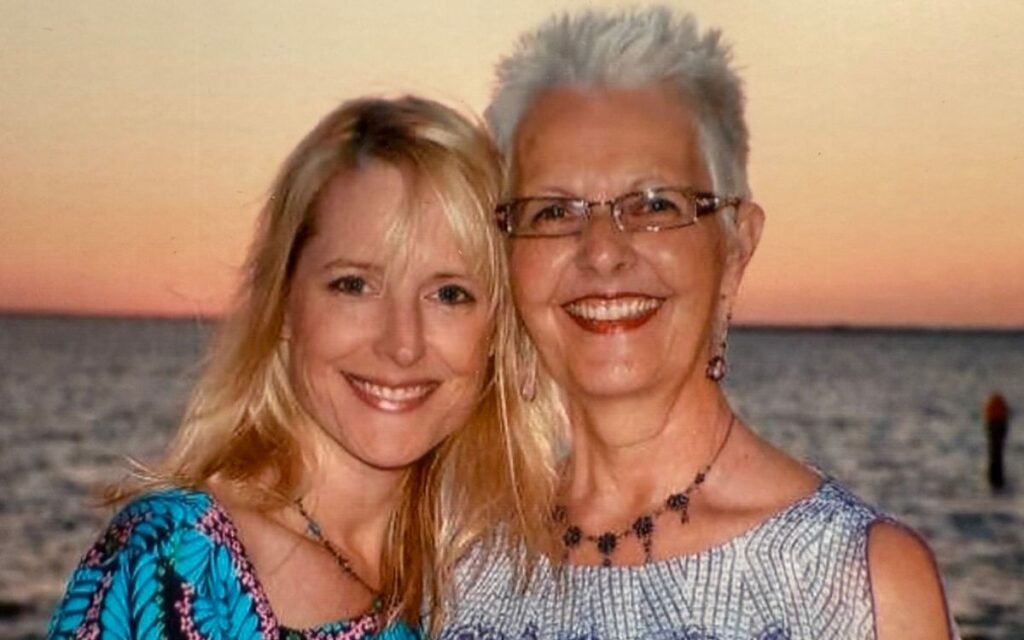Anissa Mitchell is certain it could have been different. When her mom, who was living with Parkinson’s, suddenly experienced a massive stroke, her family had no choice but to move her to a nursing home. But the care at this facility bordered on negligence.
Sadly, this is not an anomaly: most facilities do not have the training to understand how to care for people with Parkinson’s and related movement disorders. The result is that people living with these diagnoses are misunderstood and mishandled. “Had the staff at my mom’s long-term care facility had the right training,” Anissa said, “had they had resources and advocates who understand Parkinson’s, I think it would have been a much better outcome for my mom,” who passed away several years ago.
Anissa’s experience with her mom has lit a fire in her. Today, as a licensed clinical social worker and the Chief Program Officer at PMD Alliance, Anissa is a passionate advocate of our PMDA Certified Care program, which trains staff and caregivers at long-term facilities, in outpatient facilities, and in homecare settings in the specific needs of people with movement disorders, creating more knowledgeable and compassionate care.
“Experiencing staff not knowing about my mom’s disease and not being responsive to it,” Anissa said, “was extraordinarily painful.” It’s time, she says, for change.
Anissa’s mom’s artistry oozed into everything she did. She was a schoolteacher—“everyone’s favorite”—Anissa said. Each school year, she decorated her room “in a way that was so inviting and creative.” She had a flair for decorating. She and her husband lived in a huge Victorian house that they remodeled, room by room. A voracious reader, Anissa’s mom designed a majestic, Victorian library, complete with a sliding library ladder. But it wasn’t just her walls that expressed her creativity; she adorned herself in her own style. “She had five walk-in closets,” Anissa said, “like her own boutique… She knew her style and was always dressed to the nines.” She was quiet, but her creativity didn’t need to show itself in words; it was evident in the way she presented herself. “She was just a fun person,” Anissa said.
Her mom was also a positive person and, for the most part, this served her well. But when it came to her health, this trait was also an obstacle. When Anissa, who had been working as a social worker with the Parkinson’s community, started noticing symptoms in her mom and pointed them out, her mom would brush it off. “She wasn’t resistant or obstinate,” Anissa said, “just minimizing.” She wrote off the rigidity in her body as carpal tunnel syndrome and dismissed her rhinorrhea—incessant nose running that’s a lesser known non-motor symptom of Parkinson’s—even though she didn’t have allergies or a cold. Her arm wasn’t swinging when she walked and she felt like her toe was stuck on a wrinkle in a sock, even when she wasn’t wearing any. One day, when Anissa was talking to her mom about a rank smell, her mom laughed and said, “I haven’t been able to smell for years.” All red flags.
“My mom’s diagnosis story was a frustration for her,” Anissa said, “which is not unique.” After Anissa sent her mom to the doctor with a specific list of things to evaluate her for, the doctor, a general neurologist, diagnosed her with “a little Parkinson’s,” and offered no further instruction or treatment. Anissa, who knew the doctor from her work at the hospital, called him. “There’s no degree of Parkinson’s,” she said. “You either have it or you don’t.” It took Anissa’s tireless and knowledgeable advocacy to get the doctor to prescribe the standard PD medication, carbidopa levodopa.
Eventually, Anissa’s mom found her way to a qualified movement disorders specialist. “She was doing great,” Anissa said. “Her symptoms were well-controlled. She got involved in Rock Steady Boxing,” an exercise program designed specifically for people with Parkinson’s. “She never joined a formal support group,” Anissa said, “but the group at Rock Steady Boxing became a support group, like they often do.”
She was making the most of it—until the stroke hit. The massive stroke, which was unrelated to her Parkinson’s, left her completely paralyzed on her left side. “She was in the neuro ICU for quite some time,” Anissa said. “They had to remove part of her skull because her brain was swelling. It was very traumatic. She was cognitively intact. She could speak (though it was impaired) but, overnight, she became completely dependent.”
Their only choice was a nursing home.
Anissa’s mom was “at the mercy of the providers and the nursing home.” And, unfortunately, they seemed to have virtually no knowledge of Parkinson’s or resources to turn to to help them navigate her care. “The stroke was the main issue,” Anissa said, “but she had Parkinson’s that continued to progress underneath all of that”—and these issues were misunderstood and mismanaged.
In Parkinson’s, in order to reduce painful or uncomfortable symptoms from rearing their heads throughout the day in what are called “off episodes,” medication timing matters. The mantra for medication is on time, every time. But the staff at Anissa’s mom’s facility didn’t know enough about Parkinson’s to know that, so she didn’t get her medication when she needed it. The staff also didn’t understand the power of movement in slowing symptom progression. Because they failed to work on this with her, her rigidity increased and she lost her range of motion. Instead of supporting her with compassionate and knowledgeable care, the staff became angry when she could no longer reach her water cup herself.
In fact, their misunderstanding ballooned into frustration and anger. Anissa’s mom experienced temperature dysregulation. At night, she would be hot, then cold. But due to her neuropathy, it hurt to have too many blankets on her, so she needed the room’s temperature to be adjusted. “They would scream at her,” Anissa said, “mad that she needed them to frequently change the temperature.”
As Anissa’s mom started to experience Parkinson’s-related hallucinations, the staff wasn’t aware that hallucinations were a non-motor symptom of Parkinson’s. They’d get frustrated with her, not understanding why she was talking “nonsense.” They had no clue she was simply referencing her hallucinations.
Anissa would eventually report the facility to the state. After a thorough investigation (and appeals process), the nursing home company was fined on 10 infractions related solely to her mom. It was belated justice—justice that should have never been needed in the first place.
For Anissa, PMD Alliance’s Certified Care program isn’t just a professional quest; it’s personal. She wants to ensure that families like hers have peace of mind. “When you place your loved one in someone else’s care,” she said, “you’re trusting that they’ll care enough about your parent that they’ll see to her needs. When they’re cold, they’ll make sure they’re warm. When they’re scared, they’ll be there for them. When their symptoms are off, they’re not going to be frustrated that they’re acting out. They’re willing to and have taken the steps to understand. They know that the needs of people with Parkinson’s and related disorders are unique.” With Certified Care, families can trust that the staff cares.
By 2040, the number of people with Parkinson’s is expected to double. “Our current infrastructure,” Anissa said, “is not equipped for that. There are not enough facilities let alone enough people in these facilities who understand Parkinson’s. That’s why I’m so passionate about Certified Care.”
When Anissa was running a Parkinson’s Outreach Center in Orlando, FL, she said the question she got asked all the time from people seeking facilities was, “Are there any that know about Parkinson’s?” The answer was no. Instead, people with Parkinson’s would often be put into the general population at nursing homes or moved to the Alzheimer’s unit, but the needs are not the same. “Everybody should be understanding at all points of care,” she said.
“But it’s not just care,” she added. “It’s support. It’s opening the door to being a support system.” Our certified facilities, equipped with new knowledge, resources, and understanding, are taking exciting steps to support the whole person with Parkinson’s and their families. They’re there to answer each family’s questions, they’re forming support groups and exercise programs, they’re even creating educational events for the community, building bridges beyond their walls.
“Every time I talk to these families, every time I talk about Certified Care,” Anissa said, “I think of my mom. Had she had that, she may have had a different outcome. If I can share why this program is important, if I can help another person in any way, it honors her.”
Like her mom, Anissa has become a vessel of creativity, morphing pain into meaningful change.


